Azoospermia Treatments (Obstructive & Non-obstructive)
Fertility Treatment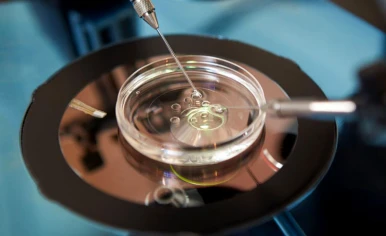
Today, fertility problems are among the main issues in families and sometimes lead to harmful social problems. Studies have shown that %15 of infertile men have azoospermia, or in other words, their semen has no sperm. Although azoospermia may cause serious diseases such as testicular cancer, it can be treated by surgery and medicine. This article introduces azoospermia and discusses how infertile men can treat zero sperm.

What Is Azoospermia?
Azoospermia, also known as no sperm count or zero sperm count, is a cause of male infertility in which no sperm is found in a man's semen analysis. Different factors such as hormonal problems, genetic disorders, unhealthy lifestyles, aging, vasectomy, damage to the sperm-delivery system, chronic infectious diseases, obstruction in the epididymis due to trauma, etc., may cause azoospermia. Generally, azoospermia has two types: Obstructive Azoospermia (OA) and Non-Obstructive Azoospermia (NOA). Fortunately, various testicular azoospermia treatment methods can help eliminate the symptoms of both OA and NOA types.
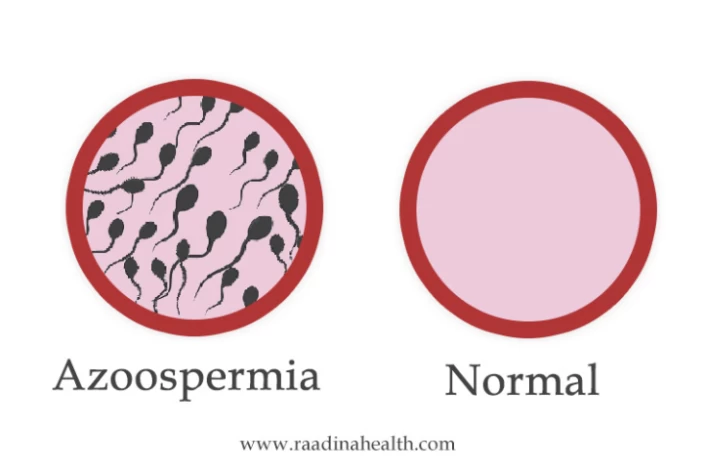
Types of Azoospermia
As mentioned earlier, azoospermia is classified into two categories: obstructive and non-obstructive. When the reproductive tract is blocked, sperm cannot enter the semen, a condition known as obstructive azoospermia. When sperm growth anomalies or hormonal issues predominate, nonobstructive azoospermia develops.
Obstructive Azoospermia (OA)
Congenital abnormalities, infections or inflammations of the reproductive system, prior trauma or injury, and retrograde ejaculation (semen moving backward and entering the bladder) can all cause this type of azoospermia, also referred to as post-testicular azoospermia. Obstructive azoospermia usually doesn't have any noticeable symptoms, but you should get a semen analysis if you experience pain when ejaculating.
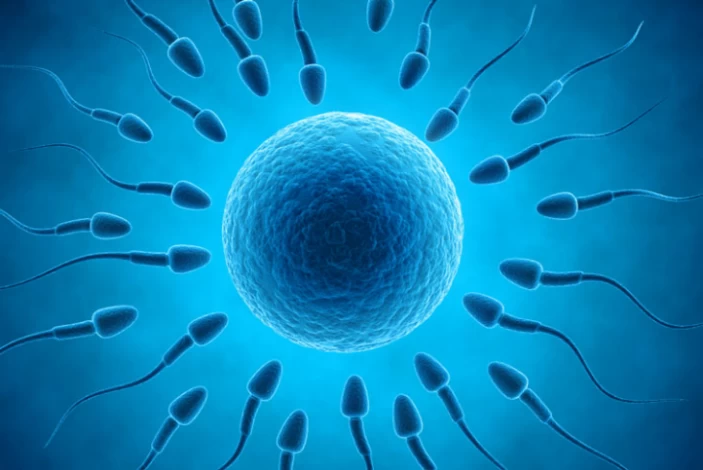
Non-obstructive Azoospermia (NOA)
Varicocele, hormonal imbalance, genetic or chromosomal abnormalities, adverse drug or hormone supplement reactions, testicular damage, exposure to radiation and toxins, chemotherapy, etc., can all cause non-obstructive azoospermia. Also, hypothalamus or pituitary gland damage may cause this type of azoospermia. In order to diagnose non-obstructive azoospermia, your doctor will analyze your blood and semen sample and inquire about your reproductive history, past reproductive tract surgeries, history of drug or alcohol addiction, etc.
Causes of Azoospermia
In general, the causes of azoospermia are divided into three categories:
Pre-testicular causes (disorders related to hormones and glands)
Suppose the pituitary gland does not secrete FSH hormone due to hypothyroidism, increased prolactin hormone, or testosterone injection. In that case, the sperm produced by testicles will decrease, and eventually, the person will suffer from azoospermia. Often, the doctor increases sperm production by injecting FSH hormone.
Testicular causes (disorders related to the testicles and the process of sperm production)
Some factors, such as urinary tract infection, radiotherapy, chemotherapy, medicines, testicle injury, or cryptorchidism, can stop sperm production and cause zero sperm count.
Post-testicular causes (obstruction of vas deferens)
The sperm produced in the testicles, after passing through a tube called the epididymis, enters the vas deferens and the ejaculatory duct. Obstruction during any of these paths causes azoospermia.
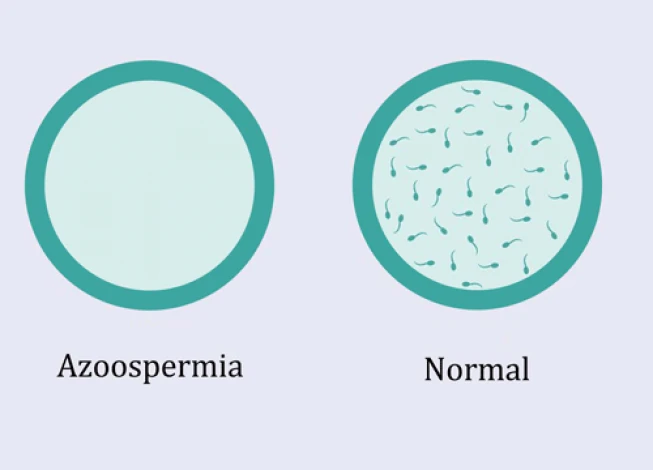
What Are the Symptoms of Azoospermia?
Generally, azoospermia should be diagnosed through semen analysis; however, if you have any of the following symptoms, you should visit a urologist.
- Having no testicle;
- Unable to have a child after one year of trying;
- Increase in body fat, body hair, and breast tissue;
- Secretion of clear, watery, or white discharges from the penis;
- Swelling of the testicles or lumping the scrotum that looks like a worm bag (varicocele);
- Having small or soft testicles and
- Having large, twisted, or prominent veins on the scrotum (varicocele).
How Is Azoospermia Diagnosed?
The patient should undergo a spermogram, also called a semen analysis, in order to diagnose azoospermia. He should first ejaculate in a sterile cup that the lab has provided for this test. The semen sample is then examined in a centrifuge and under a powerful microscope. Should a few sperm cells be present in the semen, the physician will extract them for use in assisted insemination; however, if no sperm are detected in the spermogram, the patient will need to undergo additional testing, including the following:
- Hormone test for determining FSH hormone;
- Infection test;
- Image scanning (like X-ray or MRI) of the brain and ejaculatory ducts;
- Physical examination of reproductive organs; and
- Biopsy to find obstruction in vas deferens.
Meanwhile, the fertility doctor may ask questions about previous injuries or surgeries in the pelvic area, a history of infertility or birth defect in the family, previous abuse of drugs or alcohol, urinary infection, and a history of exposure to harmful radiatiperiods for a long period.
How to Prepare for Azoospermia Treatment?
It's recommended to consider the following tips to maximize the effects of azoospermia treatment:
- Avoid drinking alcohol because it can reduce sperm count and motility;
- Stop smoking; smoking can decrease the number and motility of the sperms and increase DNA abnormalities;
- Do not wear tight underwear and pants for an extended period since they keep the testicles close to the body, and the body's temperature decreases sperm concentration and
- Do not take a hot shower before the treatment. Using hot tubs, Jacuzzis, and saunas for a long time can heat the testis and affect sperm production.
Azoospermia Treatment
There is no natural remedy for azoospermia, so it should be medically or surgically treated. Still, the disease must first be diagnosed by measuring the level of FSH hormone in the blood, examining the semen sample, and checking the size of the testicles.
Fortunately, today, there are some treatment methods and medicines for azoospermia, but first, it is necessary to determine its type: obstructive and non-obstructive. If the size of the testicles is small and the level of FSH hormone is high, the person likely has non-obstructive azoospermia. If he has pain during ejaculation, he probably has obstructive azoospermia.
If you want information about increasing sperm count, don't miss the "Low Sperm Count Treatment" article.
In the following, some methods of azoospermia treatment are mentioned in detail:
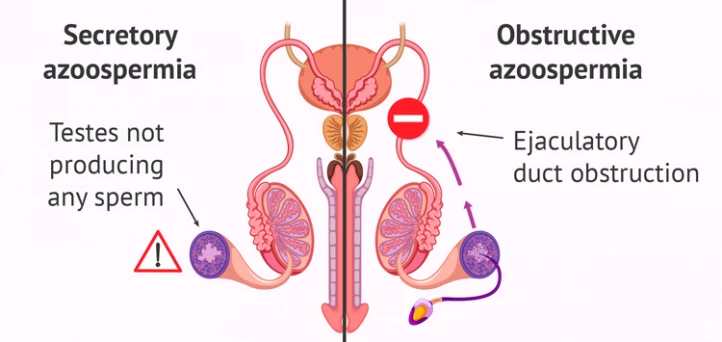
Non-obstructive Azoospermia Treatment
In non-obstructive azoospermia, the testicular biopsy shows that the testicles do not produce sperm. People with this disease are usually completely infertile, but in recent years, there have been improvements in treating this type of azoospermia.
- In men whose testicles are normal but the FSH level in the blood is not high, it may be possible to treat zero sperm by stimulating sperm production with azoospermia medicine.
- In men with cryptorchidism, if the disease is not treated on time, it will lead to non-obstructive azoospermia and infertility. In some cases, the testicles can be stimulated to produce sperm by taking particular medicines for azoospermia.
- Sometimes, in men with non-obstructive azoospermia, sperms are observed in the testicle biopsy. Although this treatment is not permanent, the doctor can perform sperm retrieval operation and use the extracted sperms in IVF;
- Suppose the cause of non-obstructive azoospermia is varicocele. In that case, the patient can undergo a varicocelectomy to remove or block the enlarged vein to let the rest of the reproductive organs function correctly.
- In men with retrograde ejaculation, the doctor retrieves sperm from their urine after ejaculation. Of course, retrograde ejaculation can be treated by medicine, but if the medicine doesn't work, the urologist uses this method of sperm retrieval (sperm extraction).
- If the cause of zero sperm count and male infertility is the infection of reproductive organs, it can be treated by taking antibiotics.
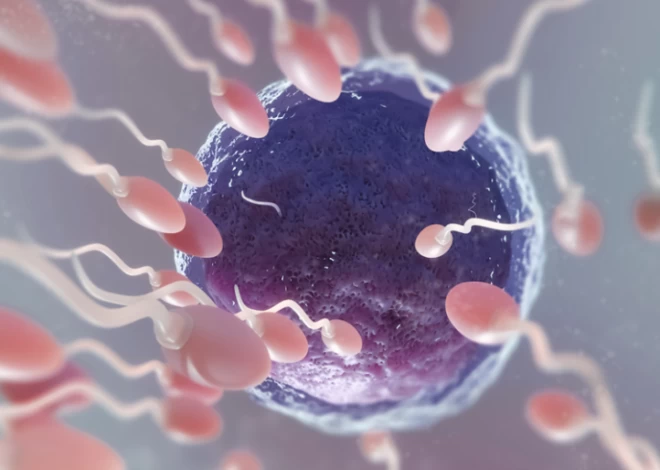
Obstructive Azoospermia Treatment
In obstructive azoospermia, the vas deferens are blocked, and there is an obstacle in the way of sperm reaching the seminal fluid. There are several treatments for this disease, such as:
- Microsurgical vasoepididymostomy (MVE) is a complicated and challenging surgery through which the vas deferens are connected to the epididymis by a microscope to eliminate the obstruction. Since the diameter of the vas deferens and epididymis is extremely small, the success rate of this operation is very low. In about 25% of cases, if the surgery is done skillfully, sperm appears in the semen, but the quality of the sperm is low.
- The sperm passes through the epididymis, vas deferens, and ejaculatory duct to reach the eggs and fertilize them. Sometimes, there is a blockage in the ejaculatory duct, which can be opened through the urethra with a simple cut.
- Percutaneous Epididymal Sperm Aspiration (PESA): It is used for men with bilateral congenital absence of vas deferens. In this method, sperm is retrieved from the epididymis with a syringe through the skin of the testicle, and then it is used in IVF treatment.
- Microepididymal Sperm Aspiration (MESA): In this method, the scrotum is surgically opened, and the part of the blocked epididymis is identified with a microscope. Then, the sperm is retrieved from behind the obstruction with a syringe and used for laboratory fertilization.
- Testicular Sperm Aspiration (TESA): Sometimes, in patients with obstructive azoospermia, sperm cannot be obtained from the epididymis, so it is retrieved from the testicles through the scrotum's skin with special needles.
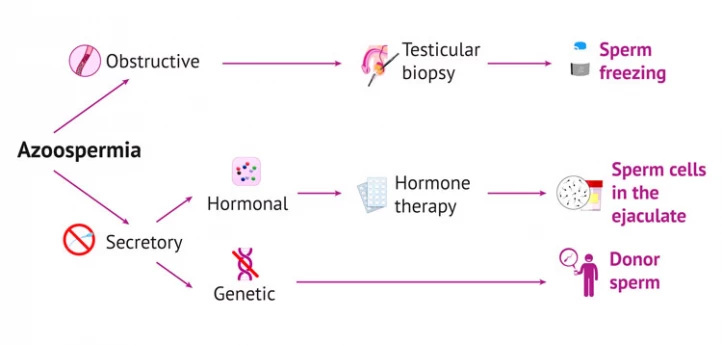
Azoospermia High FSH Level Treatment
A hormone blood test checks the blood's FSH, LH, and testosterone levels. A high level of FSH, which indicates primary testicular failure, may happen due to trauma, genetic disorders, functional gonadotroph adenomas (FGA), aging, drug or alcohol addiction, certain medications, cancer treatments, etc. When the brain finds out that the testicles are making less sperm, it releases more FSH to make the testicles produce more of them.
So, to regulate the level of FSH and treat male infertility, the doctors suggest methods to improve sperm production (such as varicocelectomy, hypogonadism treatment, etc.) and testosterone therapy. Also, if FSH is high due to chemotherapy, exposure to toxins and radiation, infection, or alcohol abuse, these risk factors should be eliminated so FSH can be adjusted.
Natural Remedies for Azoospermia
There is still doubt about whether home remedies work with azoospermia or not. In patients with low sperm count, some herbs and dietary changes may increase the testosterone level and the number of sperm; however, if there is no sperm in semen due to a blockage in reproductive organs, the herbal teas will not work efficiently.
On the other hand, some doctors believe that you can partially treat non-obstructive azoospermia by considering the following tips:
- Have a healthy diet rich in minerals, vitamins, protein, and fiber;
- Stay hydrated;
- Keep the stress away;
- Get enough rest, especially during the night;
- Avoid unhealthy habits such as drinking alcohol or smoking tobacco;
- Exercise regularly to regulate your testosterone level;
- Try meditation techniques and yoga to reduce your anxiety and
- Avoid exposure to heat, toxins, and radiation for a long period.
Diseases Associated with Azoospermia
In some cases, men with azoospermia also suffer from the following diseases. It seems that these problems are associated with azoospermia, and that's why, if azoospermia is treated on time, these problems will be eliminated, too.
- Testicular inflammation (orchitis);
- Kallmann syndrome;
- Klinefelter syndrome;
- Retrograde ejaculation;
- Obstruction of the ejaculatory ducts;
- Hyperprolactinemia (high level of prolactin in the blood);
- Cystic fibrosis;
- Testicular cancer; and
- Varicocele grade 3.

Azoospermia Treatment: Aftercare
You will not generally face serious problems after azoospermia treatment; however, contact your doctor if you have any of the following symptoms.
- Fever;
- Severe pain in testicles;
- Extreme fatigue; and
- Abnormal discharge from your penis.
Moreover, having a notorious diet and taking necessary supplements after azoospermia treatment is necessary. Also, regular exercise and yoga can increase sperm production and treat zero sperm.
How to Prevent Azoospermia?
If the cause of azoospermia is genetic defects, there is not much to do to prevent it. But sometimes, the cause of azoospermia is hormonal imbalance, testicular injury, or poor lifestyle; in such cases, this disorder can be prevented by following these instructions:
- Protect your testicles from injuries and hits. If you do contact sports, wear a testicle shield to protect your reproductive organs;
- Limit your exposure to toxins, radiation, and extreme heat;
- If you take certain medications, ask your doctor if they affect your sperm production and
- Have a healthier lifestyle by quitting smoking and drinking alcohol.
FAQs About Liposuction Aftercare
1.What’s the difference between obstructive and non-obstructive azoospermia?
Obstructive means sperm is made but blocked from coming out. Non-obstructive means the body isn’t making sperm (or not enough of it).
2.Is surgery a treatment for obstructive azoospermia?
In many cases, microsurgical techniques like vasovasostomy or epididymovasostomy can help restore sperm flow.
3.Can sperm be retrieved in non-obstructive azoospermia?
Procedures like micro-TESE (microsurgical testicular sperm extraction) can sometimes locate small pockets of sperm in the testes.
4.Will I need IVF or ICSI if I have azoospermia?
If sperm is retrieved, IVF with ICSI (intracytoplasmic sperm injection) is usually the next step to fertilize the egg.
5.What are the potential complications of Azoospermia treatments?
Complications from surgery to treat Azoospermia might include infection, bleeding, hematoma formation, and failure to restore sperm production (for obstructive azoospermia). ART techniques carry potential risks such as multiple pregnancies, ovarian hyperstimulation syndrome (OHSS), and ectopic pregnancy.


 WhatsApp
WhatsApp
 Telegram
Telegram
 Facebook
Facebook
 Email
Email

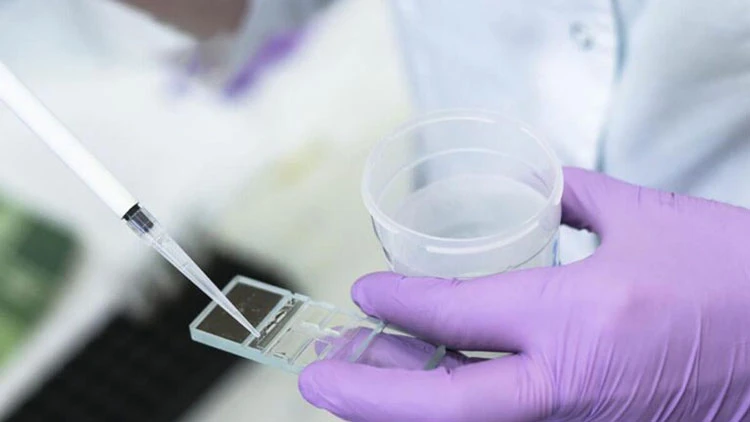
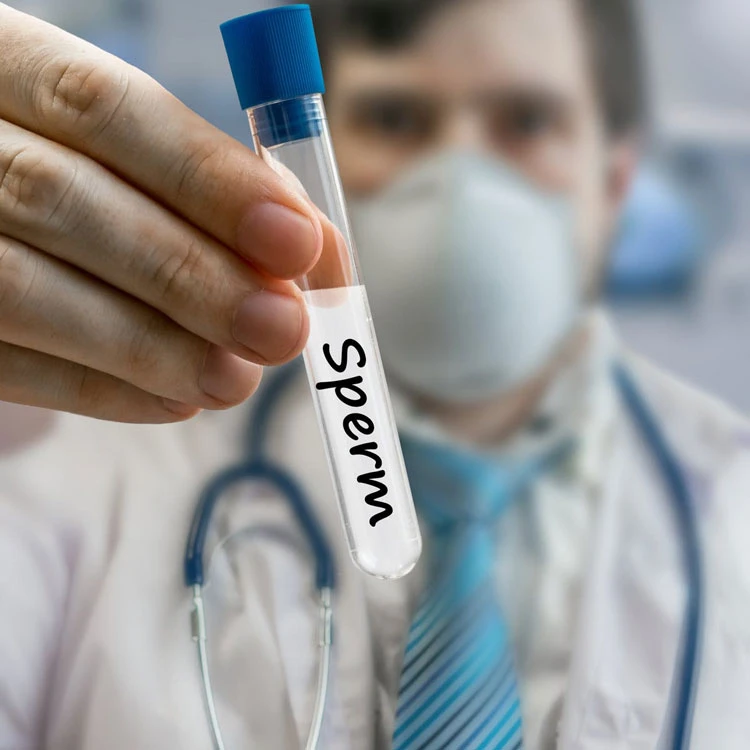


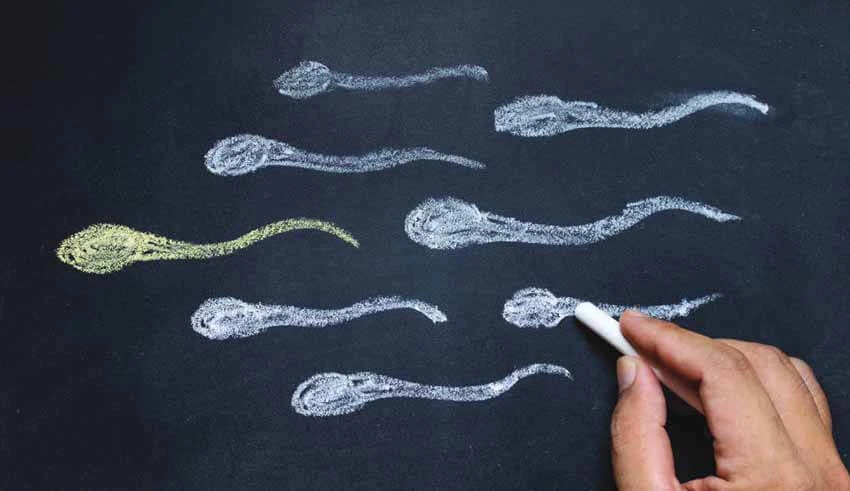
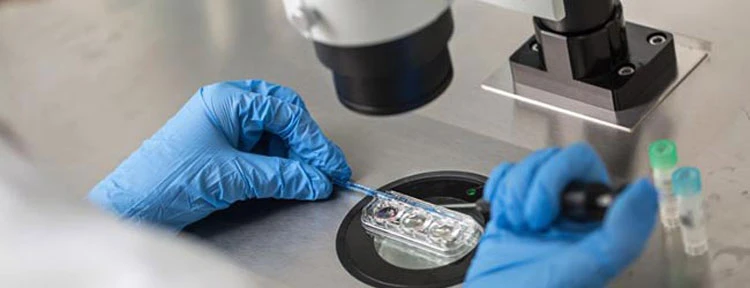

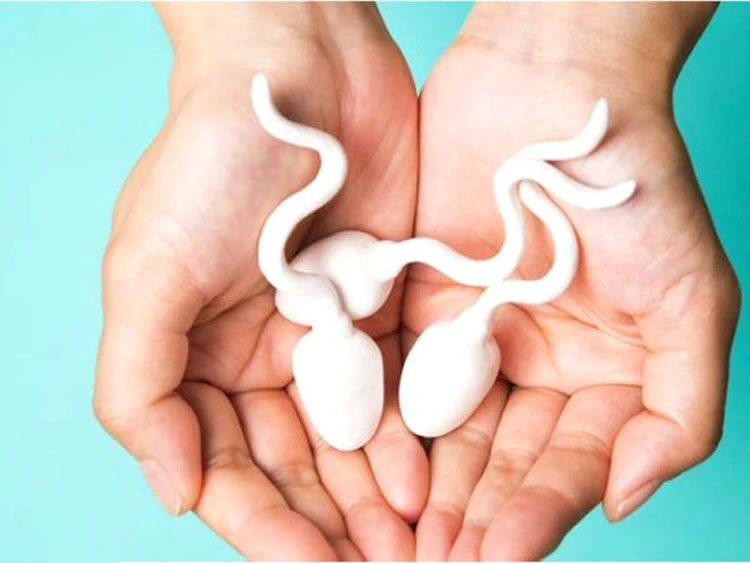
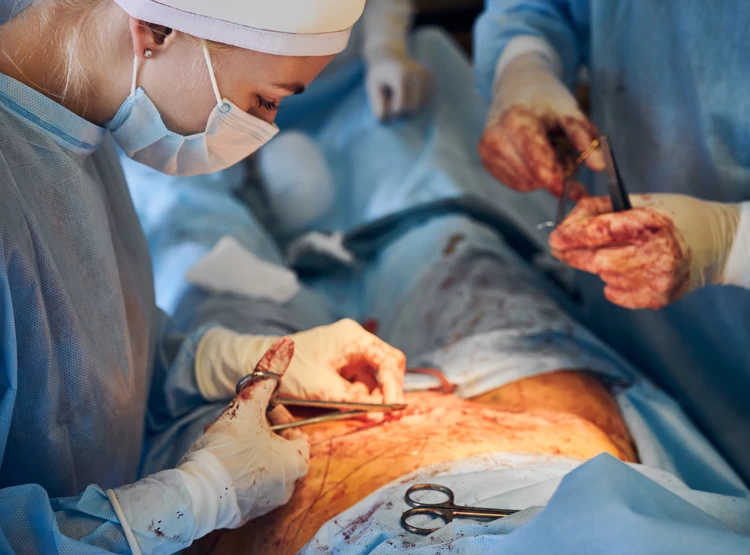
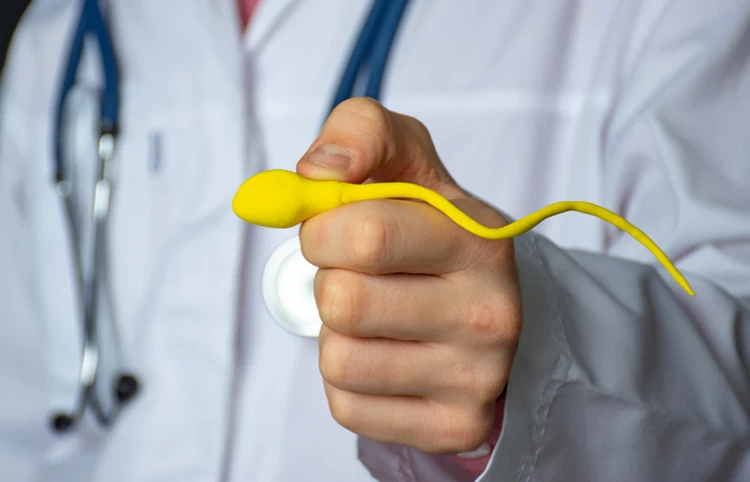
User
-Hi